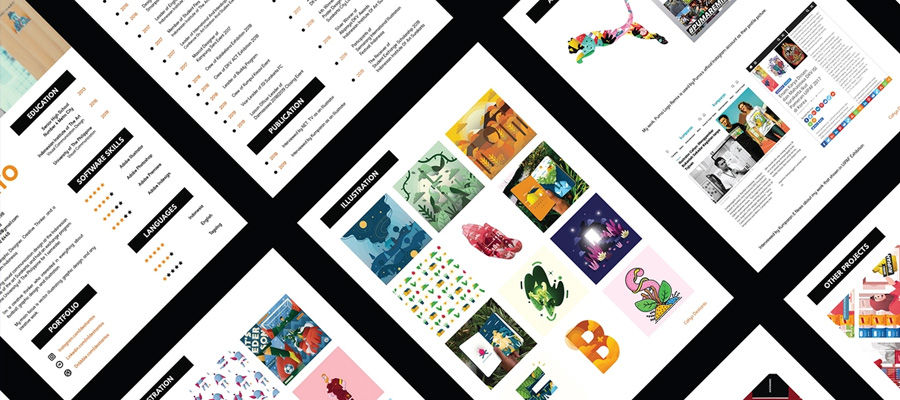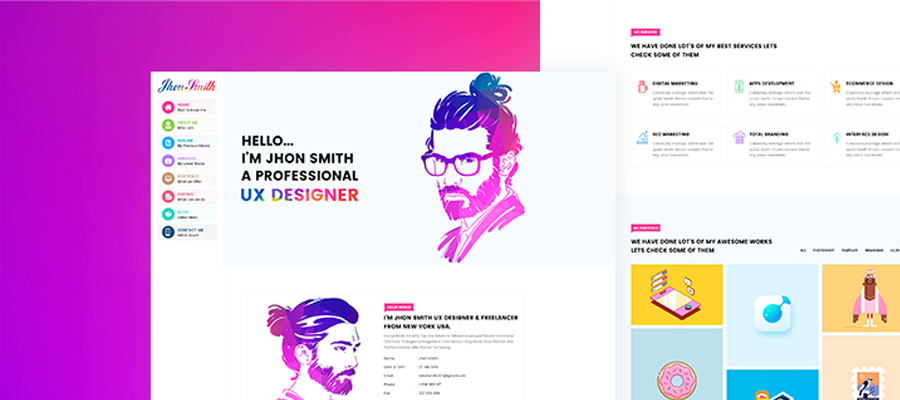Just as with resume writing, a good cover letter starts with some essential elements and it is important to be sure you have a grasp on these.
It’s also important to know that a great cover letter takes time to write. If you follow these guidelines, you will see that a cover letter requires research, reflection and detailed editing.
An articulate, error free letter could be the difference between getting the job and not, no matter how exceptional your resume may be. You may also use professional cover letter writing service to make your cover letter more quality and professional.

photo credit: Maximo - CV Resume Pack With Page Builder by Ali Sayed
General tips
- Send a cover letter with every resume you send, even if it is not specifically requested.
- Write a new cover letter for each application. The letter should create a narrative about you and your work, explaining why you are a good fit for the position and so it needs to be specific.
- Follow the principles of standard English usage.
- Use the same font style and size as your resume.
- Use standard formatting (see the cover letter template that follows).
- Be direct and concise, using simple and straightforward language.
- Do not exceed one page.
- Proofread and correct all spelling and grammatical mistakes. Letters must be error-free.
Where to begin
- Start with the job description and/or the organization’s mission statement.
- Highlight the qualifications they are seeking in a candidate and jot down notes that demonstrate you have those qualifications. Use these notes to develop the body of your letter.
- Why are you interested in this position? Brainstorm for yourself and think of specific examples that will demonstrate this.
Important things to know: a cover letter...
- Is not a distilled version of your resume. Rather it should help an employer see why you are a strong candidate by providing insight into how your experience is relevant to the open position’s key responsibilities.
- Should show what you hope to contribute to the position and the organization.
- Is an opportunity to focus on your anticipated benefit to the company. You can certainly share what you hope to learn from an internship, but you should lead with what you can contribute.
- Should implicitly demonstrate that you have done your homework on the company and/or industry as well as on the position.
- Should reflect that you have a strong intellect and that you write well.
- Highlights skills and experience specific to the job posting (if there is one) or position description as it has been conveyed to you. In Brianna Bennington’s case, the job posting sought applicants with graphic design and Squarespace experience, in addition to some social media and video editing experience. The cover letter speaks to these priority skill sets, focusing attention on the experience she has in those areas. It is concise, clear and specific, reflecting the same keywords used in the actual job position where appropriate.

Freebie CV Resume redesign by Fernando Báez
Sending the application
- Email: Include a brief note in your email body indicating that your letter and resume for X job are attached. Use the subject line of your e-mail to clearly indicate what you are applying for and your name (e.g. Internship Application – Benjamin Bennington)
- Mail: Use standard 8 1/2 x 11-inch paper. Use good quality white or ivory stationary (preferably the same type used for your resume). If possible type the return address and mailing address (or use computer-generated mailing labels) on a legal-sized or flat envelope. Many offices routinely attach the envelope to the correspondence to reference the post date.
- On-line application: The online system should indicate what documents they will accept. If there is a place for you to upload a cover letter, do so.
- Note: If you don’t know the contact information for the position, check the listing and/or call the organization main number to ask. For example, “Hello. I am applying for X. Can you tell me to whom I should direct the application?”




















